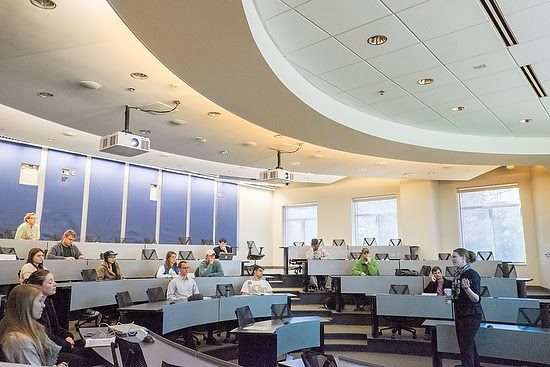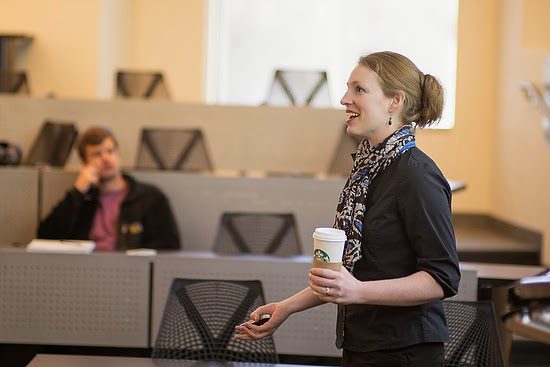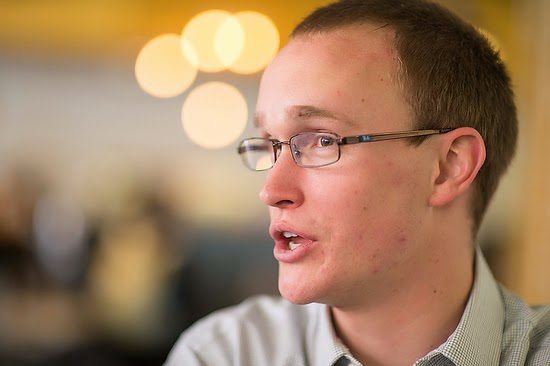| Fujifilm X-E2, 18-55mm, ISO 6400, ƒ/3.6, 1/250, custom white balance with ExpoDisc |
A plot “ensures that you get your character from point A to point Z.”
The shooting of the story is often not in the order of telling the story. It is standard in Hollywood when they are making a movie to shoot a story all out of order for budget reasons.
You may need to go ahead and shoot the ending because it takes place in the spring, and you are now in the Spring time.
 |
| Fujifilm X-E2, 18-55mm, ISO 6400, ƒ/9, 1/45, custom white balance with ExpoDisc |
Yesterday I was working with my intern/photo assistant. I sat down for a few minutes to talk about what I was doing and why. He is going to Lisbon, Portugal, with me and will be shooting his own visual story.
One thing I talked to him about was how every situation I shot was as if it were a stand-alone story.
 |
| Fujifilm X-E2, Nikon 85mm ƒ/1.4 D AF, using Nikon G to FX adapter, ISO 500, ƒ/1.4, 1/60 |
Yesterday I photographed a Georgia Tech Management student. I followed him around for the day. While in the classroom with him, I photographed each situation as if the whole story had to come out. I was shooting stills and videos. I shot an overall shot of the classroom, some of the teacher and some of the students, and everything else you could think of in between.
 |
| Nikon D4, Nikon 85mm ƒ/1.4 D AF, ISO 1100, ƒ/1.4, 1/250 Custom white balance with the ExpoDisc |
I shot each situation as if it were a stand-alone package because it is easier to sequence the overall package with the best photos to tell the complete story.
 |
| Nikon D4, 14-24mm, ISO 12800, ƒ/6.3, 1/500, custom white balance with ExpoDisc |
If you didn’t shoot the variety, you might end up with all close-up shots when you finally were editing. Then the array of the photo starts to work against you by shooting to get good tight, medium, and overall pictures and varieties of each of those; you then are picking from each situation and then putting these into a sequence that moves the viewer through the plot of events to tell the story.
 |
| Nikon D4, 28-300mm, ISO 8000, ƒ/4.8, 1/250, custom white balance with ExpoDisc |
Unlike fiction writers who can create their content, the visual storyteller who captures the story must grasp it before it is sequenced and told. The writer can design and make it work and not worry if they have images to move you through the plot. They create it.
 |
| Fujifilm X-E2, 18-55mm, ISO 400, ƒ/10, 1/500 |
I even did the environmental portrait as a safe shot of the student in front of the Georgia Institute of Technology sign.
During our interview with the subject, he mentioned that he would be working with Wells Fargo Securities this coming summer. So just to have something we could drop in for a visual, we found a sign to put him in front of for the story.
 |
| Fujifilm X-E2, 18-55mm, ISO 200, ƒ/10, 1/180 and -1 EV on the pop-up flash |
The bottom line is that you need to have a storyline in mind while shooting. Then for each point of the outline, you shoot it like it will be the complete story. Then, you create another sub-outline of the design that makes this a full report.
It is almost impossible to overshoot for a visual storyteller. Those who undershoot will have to rely on other communication like text or audio to help tell the story.
The best way to tell a story is to show the audience rather than say it to the audience. Don’t be caught without enough visuals when putting the final package together.

